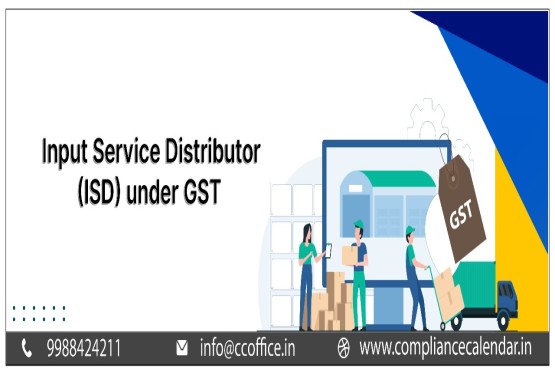The Income Tax Act of India classifies an individual's earnings into five distinct categories, known as the "5 heads of income." This classification ensures a systematic approach to assessing and taxing various income sources. Knowing these categories is important for accurate tax computation and compliance. In this article, we will discuss the main 5 heads of income in India
Main 5 Heads of Income in India
The five heads of income are:
1. Income from Salary
2. Income from House Property
3. Income from Profits and Gains from Business or Profession
4. Income from Capital Gains
5. Income from Other Sources
Let's delve deeper into each of these categories to comprehend their scope and implications.
Income from Salary
This category encompasses remuneration received by an individual for services rendered under an employer-employee relationship. It includes various components such as:
• Basic Salary: The core component of an employee's compensation.
• Allowances: These are financial benefits provided over and above the basic salary to meet specific needs. Common allowances include:
-
House Rent Allowance (HRA): Assists employees in covering accommodation expenses.
-
Transport Allowance: Supports commuting costs.
• Perquisites: Also known as 'perks,' these are non-monetary benefits like a company car, accommodation, or subsidized loans.
• Bonuses and Commissions: Additional incentives based on performance or company profitability.
• Pension: Regular payments made to retired employees.
• Gratuity: A lump-sum amount paid by employers as a token of appreciation for long-term service.
The taxability of salary income is governed by specific sections of the Income Tax Act:
• Section 15: Determines the taxability of salary income.
• Section 16: Outlines deductions available under salaries, such as standard deductions and entertainment allowances.
• Section 17: Defines the various components of salary, including perquisites and profits in lieu of salary.
It's essential to note that certain exemptions can be claimed under this head, such as HRA and transport allowance, subject to specified conditions.
Income from House Property
This head pertains to income derived from owning property consisting of buildings or land appurtenant thereto. The taxation under this category applies irrespective of whether the property is rented out or deemed to be rented. The key aspects include:
• Self-Occupied Property: A property used by the owner for personal residence.
• Let-Out Property: A property that is rented to tenants.
• Deemed Let-Out Property: If an individual owns more than two self-occupied properties, the additional properties are considered as deemed let-out for taxation purposes.
The computation of income from house property involves:
1. Gross Annual Value (GAV): The total rent received or receivable annually.
2. Net Annual Value (NAV): GAV minus municipal taxes paid.
3. Deductions under Section 24:
-
Standard Deduction: 30% of NAV to cover repairs and maintenance, irrespective of actual expenditure.
-
Interest on Borrowed Capital: Interest paid on loans taken for acquisition, construction, repair, renewal, or reconstruction of the property. For self-occupied properties, the deduction is capped at Rs.2 lakh per annum.
It's noteworthy that losses under this head can be set off against other heads of income up to Rs.2 lakh in a financial year. Any unadjusted loss can be carried forward for up to eight years but can only be set off against income from house property in subsequent years.
Income from Profits and Gains from Business or Profession
This category includes income earned by individuals or entities from any trade, commerce, manufacturing, or any adventure or concern in the nature of trade. It also encompasses professions involving the exercise of intellectual or manual skills, such as legal, medical, engineering, or architectural professions.
The computation of income under this head involves:
1. Gross Receipts: Total revenue earned from the business or profession.
2. Deductions for Expenses: Expenses incurred wholly and exclusively for the purpose of the business or profession are deductible. These may include:
-
Rent for Business Premises: Payments made for the use of property for business purposes.
-
Salaries and Wages: Compensation paid to employees and workers.
-
Depreciation: A deduction for the wear and tear of tangible assets used in the business.
-
Interest on Business Loans: Interest paid on capital borrowed for business purposes.
-
Other Operational Expenses: Such as utility bills, office supplies, and marketing expenses.
Certain expenses are expressly disallowed, such as personal expenses, income tax paid, and any expenditure incurred for purposes that are an offense or prohibited by law.
Individuals and Hindu Undivided Families (HUFs) earning income from business or profession are required to file their returns using ITR-3 or ITR-4 forms, depending on the nature and size of their income.
Income from Capital Gains
Profits earned from the transfer or sale of an investment asset are taxable under the head 'Income from Capital Gains. Assets such as gold, bonds, mutual funds, real estate, and stocks are considered capital assets.
Capital gains are categorized into:
• Long-term capital gains
The holding periods and tax rates for different asset classes are as follows:
| Nature of Asset | Holding Period | Short-term Tax Rate | Long-term Tax Rate |
| Immovable Property | 24 months | Slab Rates | 12.5% without indexation or 20% with indexation |
| Unlisted Equity Shares | 24 months | Slab Rates | 12.5% without indexation |
| Listed Equity Shares or Equity-Oriented Mutual Funds | 12 months | 20% | 12.5% without indexation |
| Other Capital Assets | 36 months | Slab Rates | 12.5% without indexation |
| Non-Equity Mutual Funds (Debt Funds) - Purchased after 1st April 2023 | Not Applicable | Slab Rates | Slab Rates |
Note: Effective from 23rd July 2024, a uniform tax rate of 12.5% applies to long-term capital gains across all asset classes, with specific provisions for immovable property.
Details of capital gains should be disclosed in Schedule CG of your Income Tax Return (ITR) form. Individuals need to file ITR-2 or ITR-3, depending on the nature of their income.
Income from Other Sources
This head includes any income not categorized under the other four heads of income. As per Section 56(2) of the Income-tax Act, it encompasses earnings such as dividends, interest, rent from plant and machinery, lottery winnings, bank deposit interest, gambling, card games, and sports rewards.
Heads of Income vs. Sources of Income
The Income Tax Act classifies earnings into five heads for taxation purposes:
1. Income from Salaries
2. Income from House Property
3. Profits and Gains from Business or Profession
4. Income from Capital Gains
5. Income from Other Sources
In contrast, sources of income refer to the origins of earnings for individuals or businesses. For individuals, these include salary, interest, and commission. For businesses, they encompass returns on investments, profits, and government grants.
Five Features of Tax
1. Compulsory Payment: Taxes are mandatory for all liable citizens, and non-compliance is a punishable offense.
2. Regular Payment: Taxes are payable periodically as determined by the tax authority.
3. Purpose of Public Expenditure: Taxes are levied to fund government public expenditures.
4. No Direct Quid-Pro-Quo: There is no direct exchange between the taxpayer and the public authority for the tax paid.
5. Various Types: Taxes can be direct (e.g., income tax) or indirect (e.g., sales tax), among others.
Conclusion
Having knowledge about the five heads of income—Salary, House Property, Business or Profession, Capital Gains, and Other Sources—is crucial for accurate tax computation and compliance in India. Proper classification ensures you benefit from applicable deductions and exemptions, facilitating efficient financial planning. For assistance with tax compliances, you can connect with Compliance Calendar LLP's experts via email at info@ccoffice.in or Call/WhatsApp at +91 9988424211.
FAQs
- What are the 5 heads of income under the Indian Income Tax Act?
Answer. The 5 heads of income under the Indian Income Tax Act, 1961 are:
1. Income from Salary
2. Income from House Property
3. Profits and Gains from Business or Profession
4. Capital Gains
5. Income from Other Sources
- What falls under “Income from Salary”?
Answer. “Income from Salary” includes all payments received by an employee from an employer. This includes:
• Basic salary
• Allowances (HRA, DA, etc.)
• Bonuses and commissions
• Perquisites (like car, housing, etc.)
• Retirement benefits (gratuity, pension, etc.)
- What is “Income from House Property”?
Answer. This head covers rental income earned from a house or building owned by a person (not used for business purposes). Even if the property is not rented but is deemed to be let out (in certain cases), income is taxed here after deductions like municipal taxes and standard deduction.
- What is included under “Profits and Gains from Business or Profession”?
Answer. This head covers earnings from:
• A business (like trading, manufacturing, services)
• A profession (like doctors, CAs, consultants, etc.)
It includes profits, incentives, and benefits derived from business or professional activities.
- What is considered under “Capital Gains”?
Answer. Capital Gains are profits from the sale or transfer of capital assets, like:
• Real estate
• Shares and mutual funds
• Gold or other valuable assets
These gains are classified as short-term or long-term, depending on the holding period.
- What is “Income from Other Sources”?
Answer. This is a residual category that covers income not taxed under the other four heads, such as:
• Interest on savings/fixed deposits
• Dividend income
• Winnings from lottery or game shows
• Gifts exceeding Rs.50,000 (in certain cases)
• Family pension
- Why is classification under different heads of income important for tax filing?
Answer. Classifying income correctly ensures:
• Accurate calculation of tax liability
• Proper claim of deductions and exemptions
• Avoidance of double taxation or omission
• Compliance with Income Tax laws









_crop10_thumb.jpg)


















































































_for_FY_2025-26_crop10_thumb.jpg)












_learn_crop10_thumb.jpg)








_Filing_Due_Dates_for_FY_2024-25_learn_crop10_thumb.jpeg)






